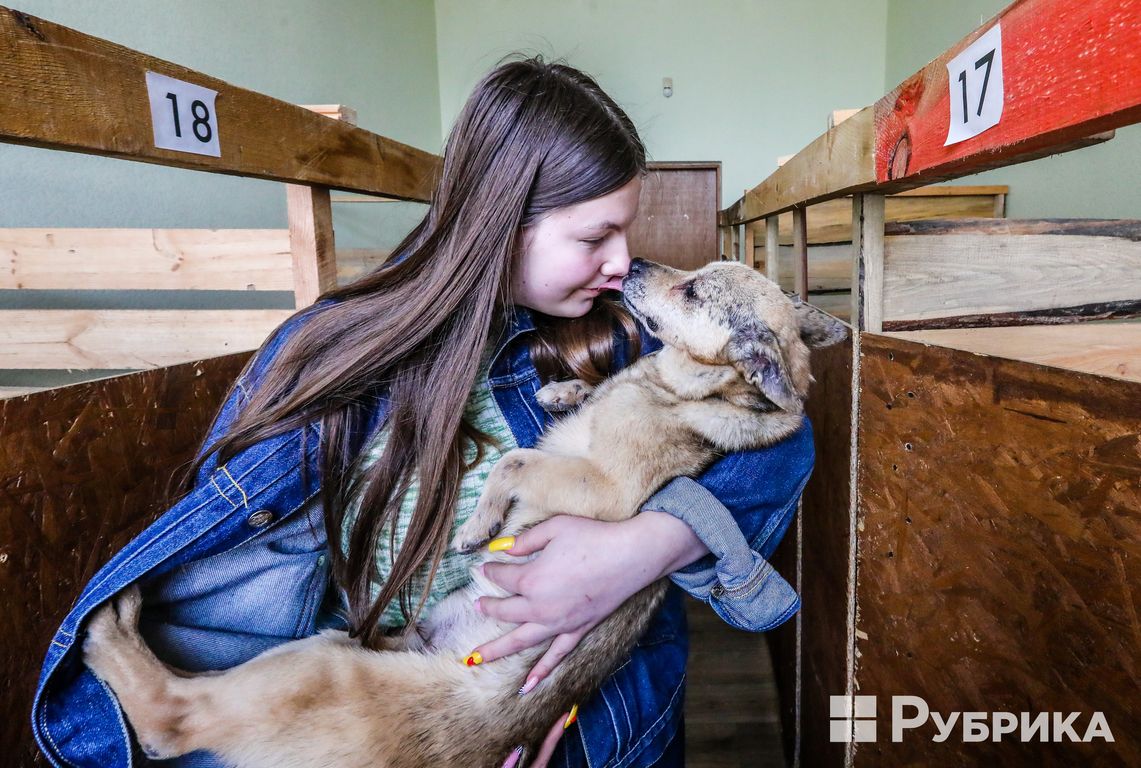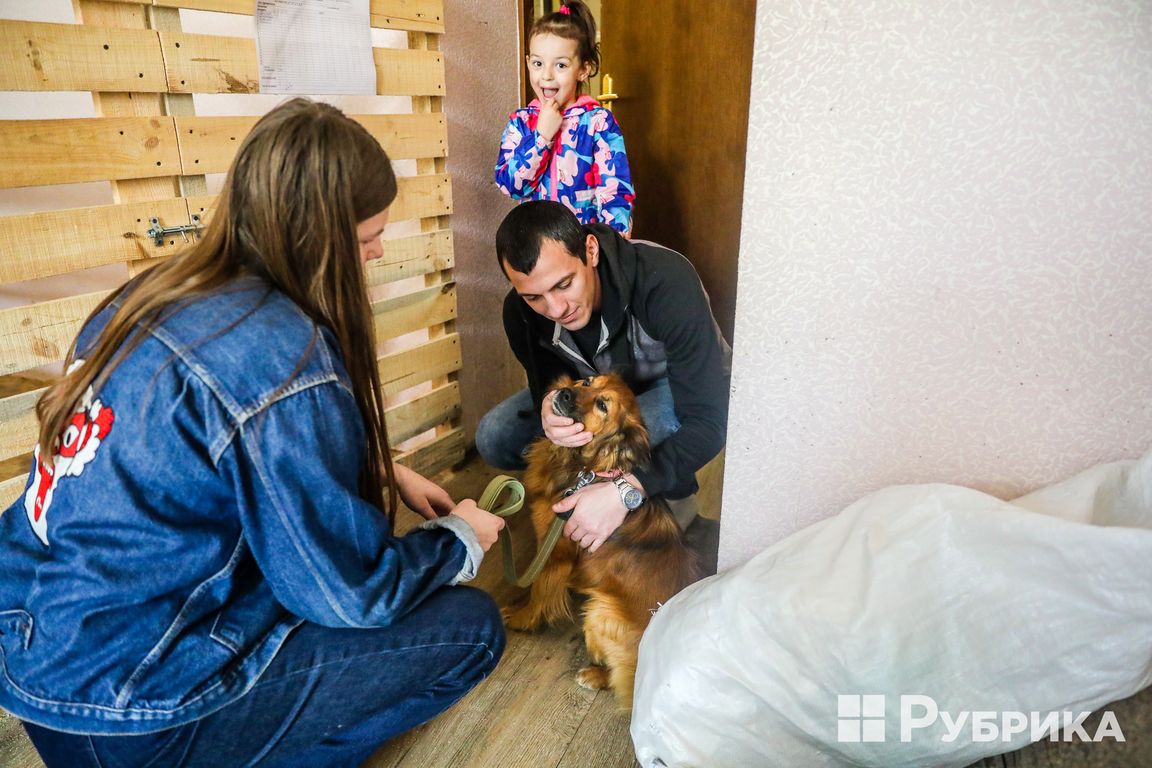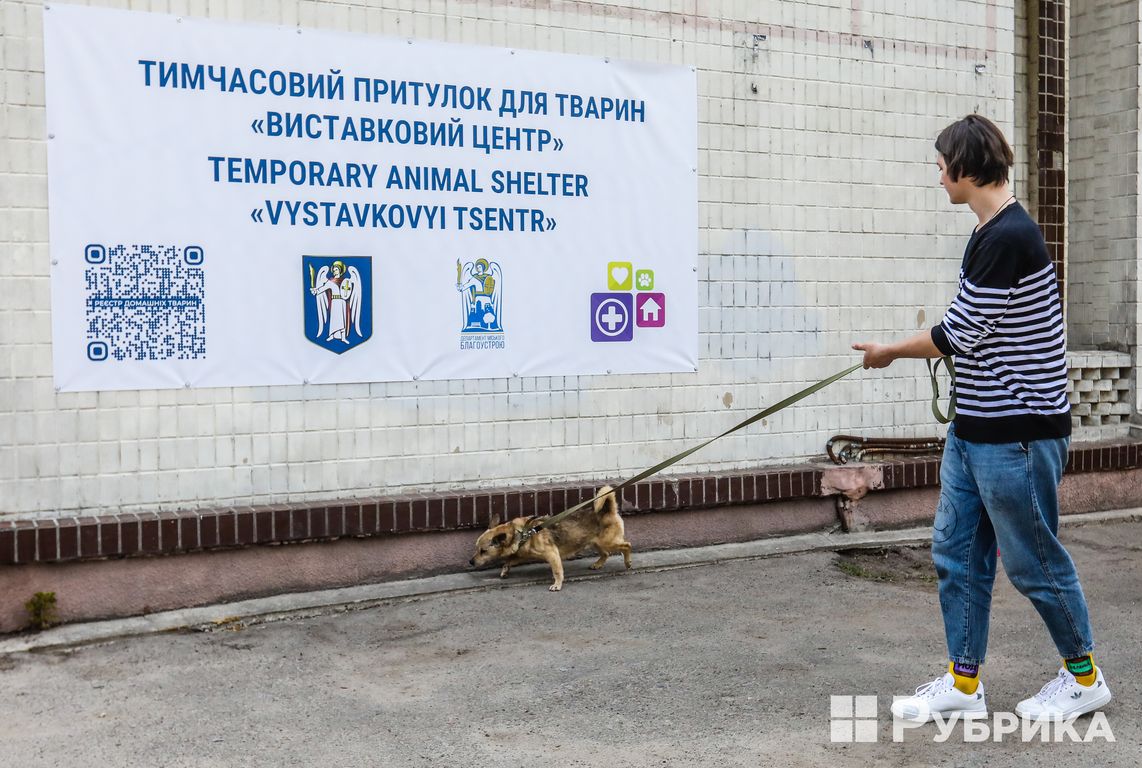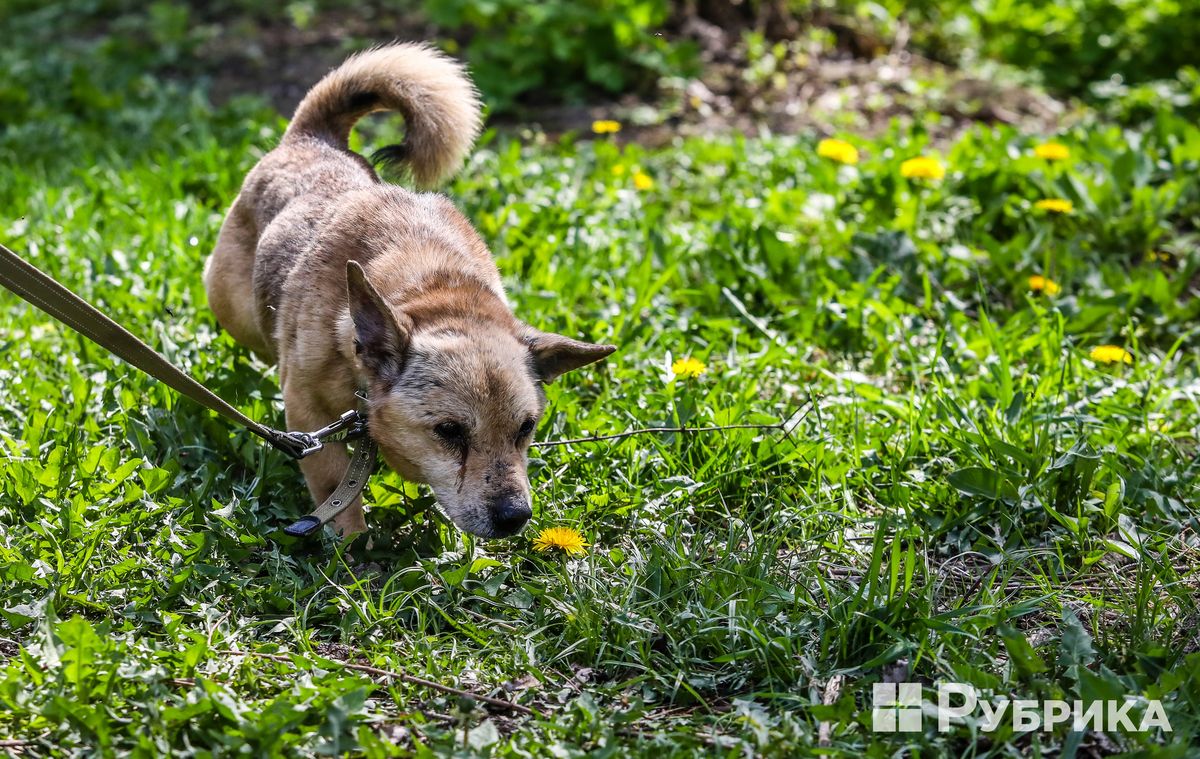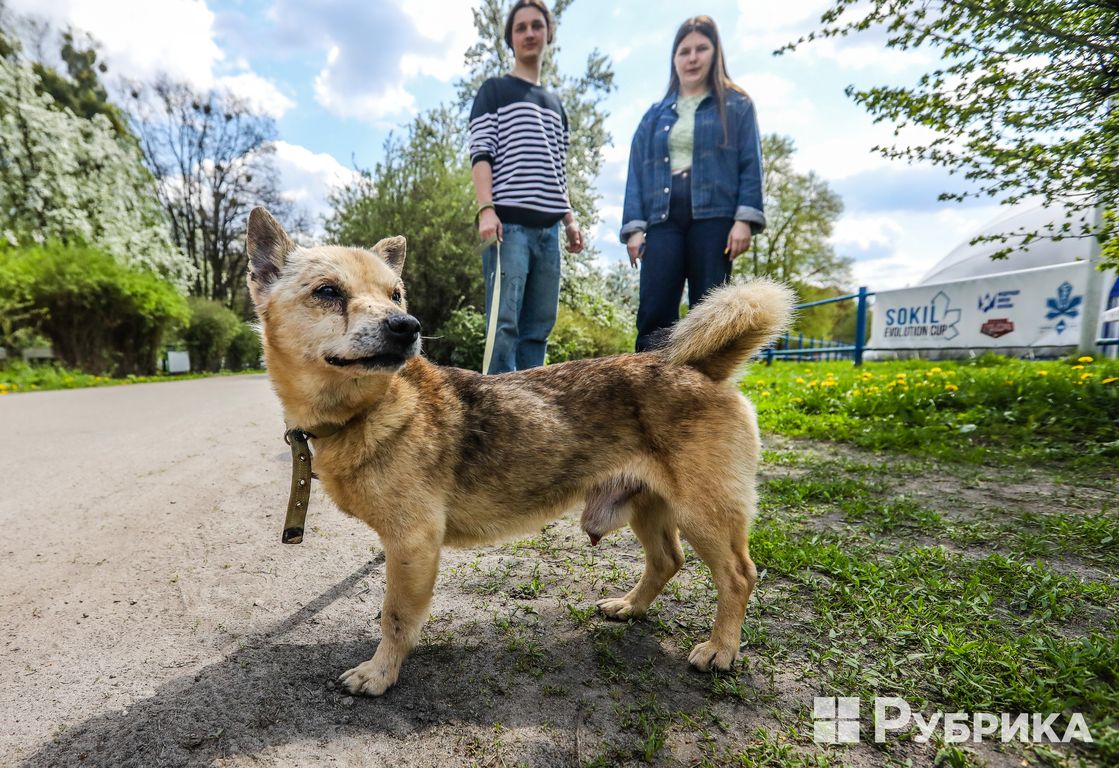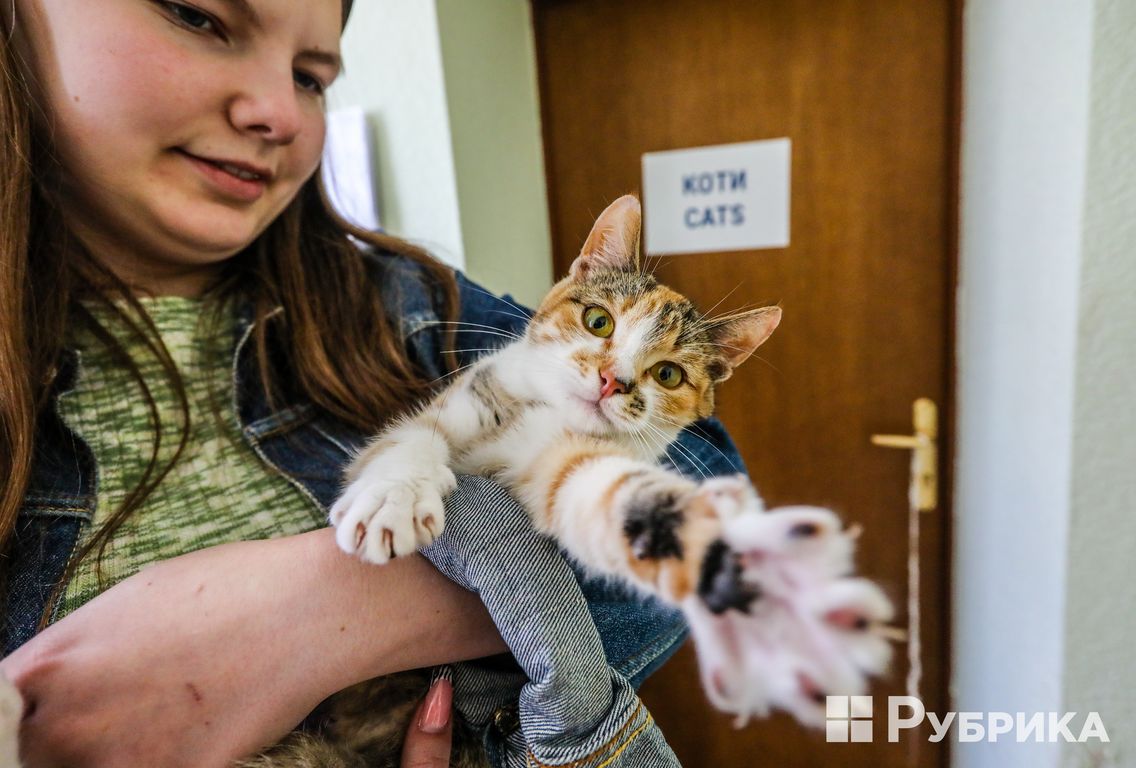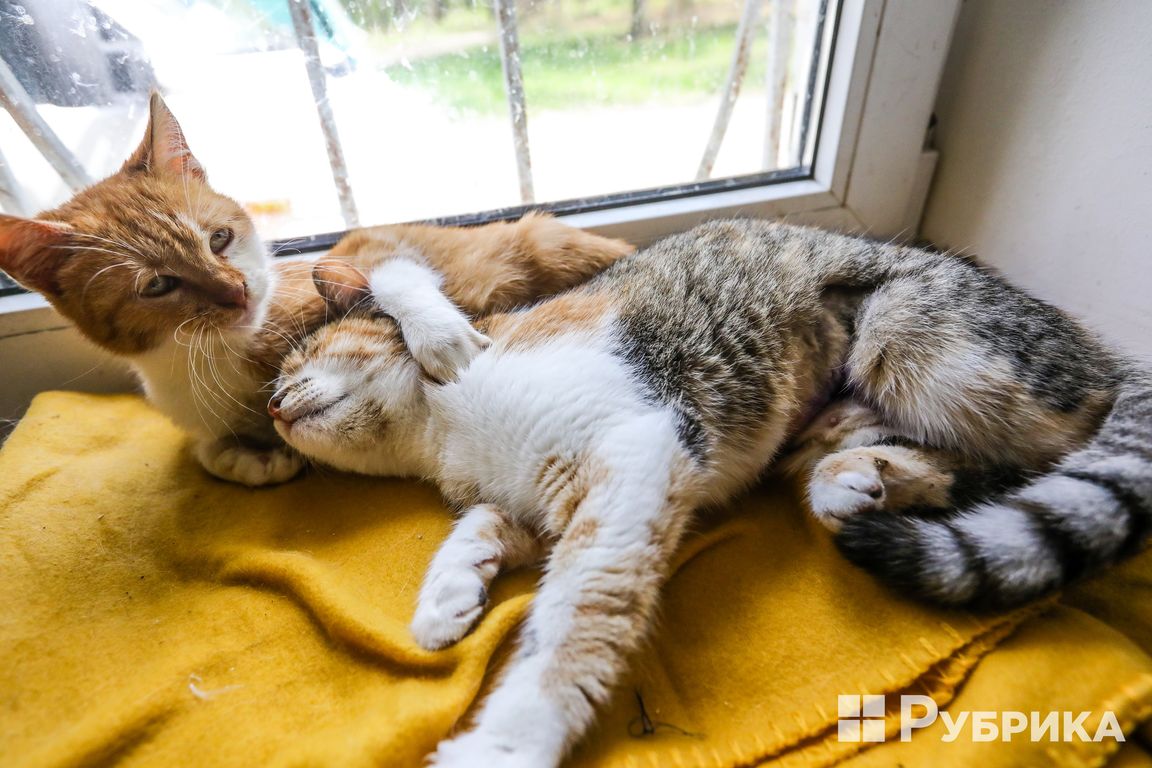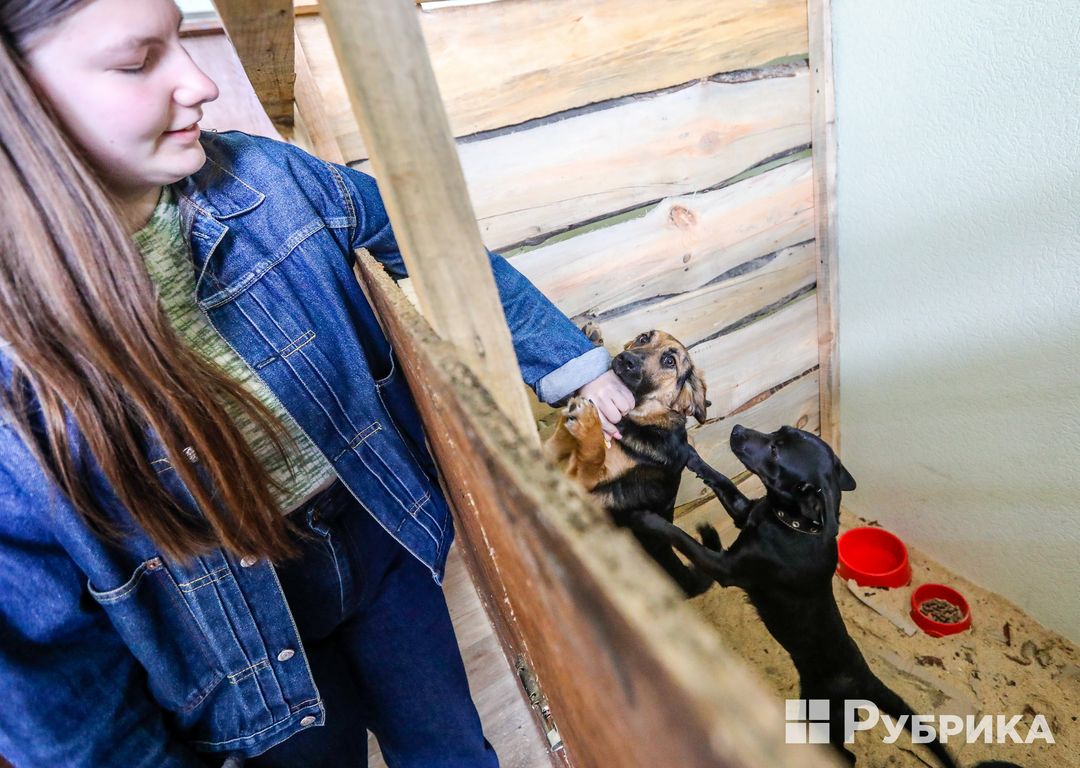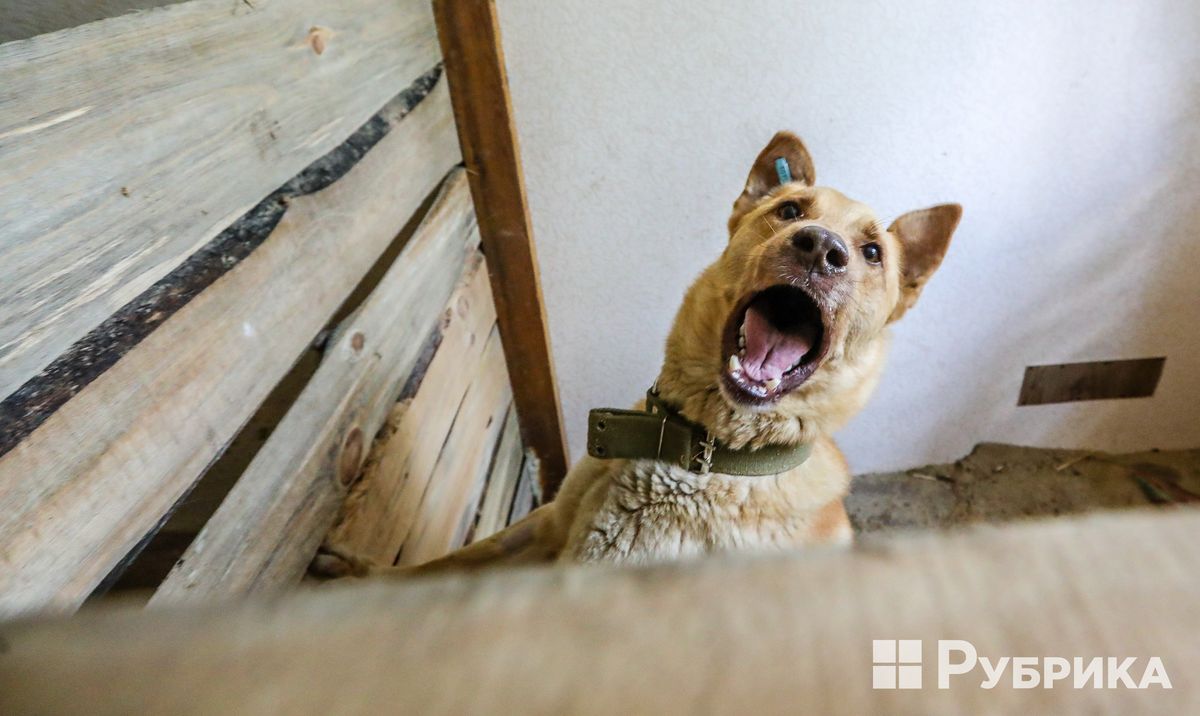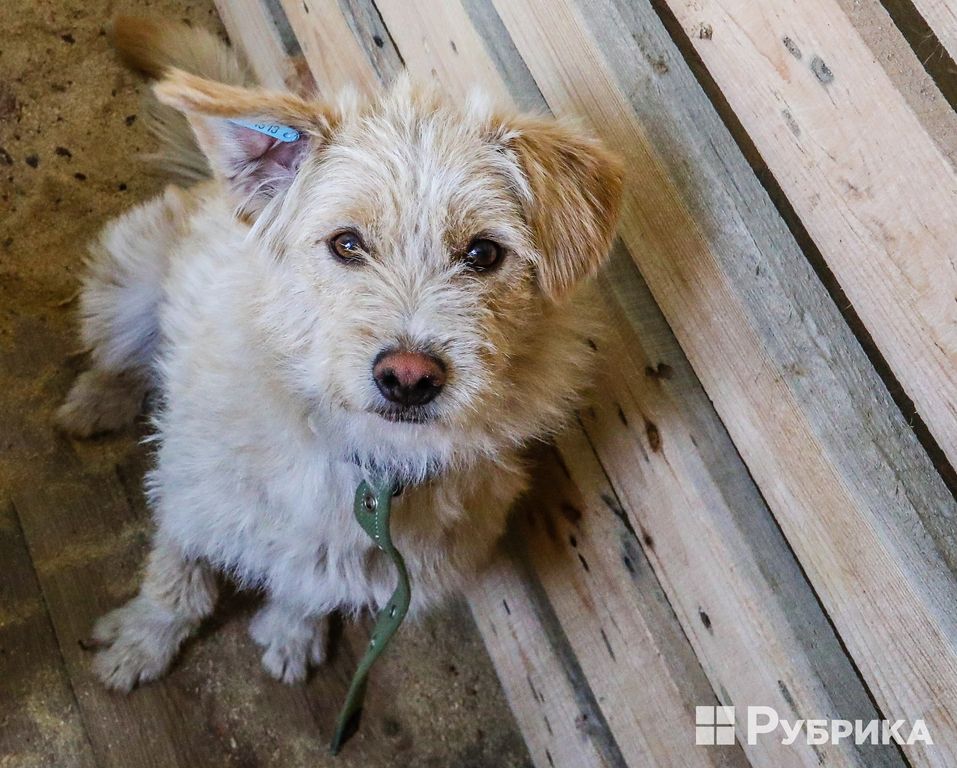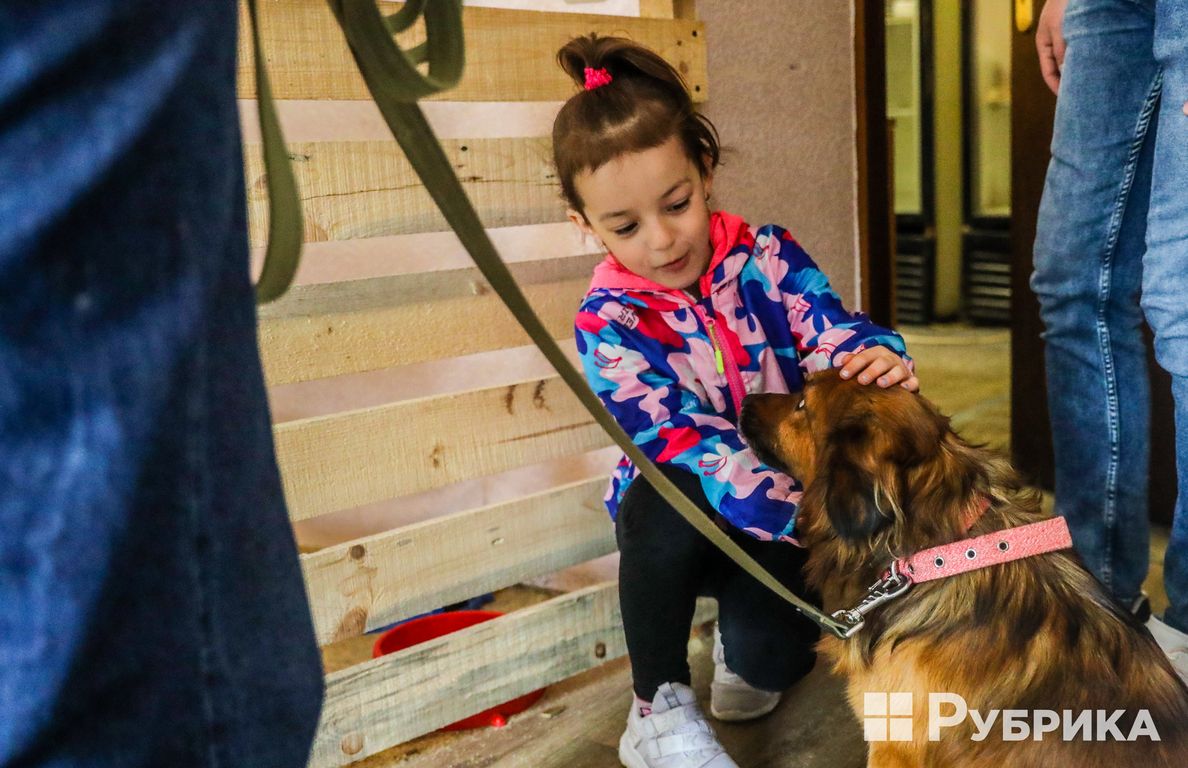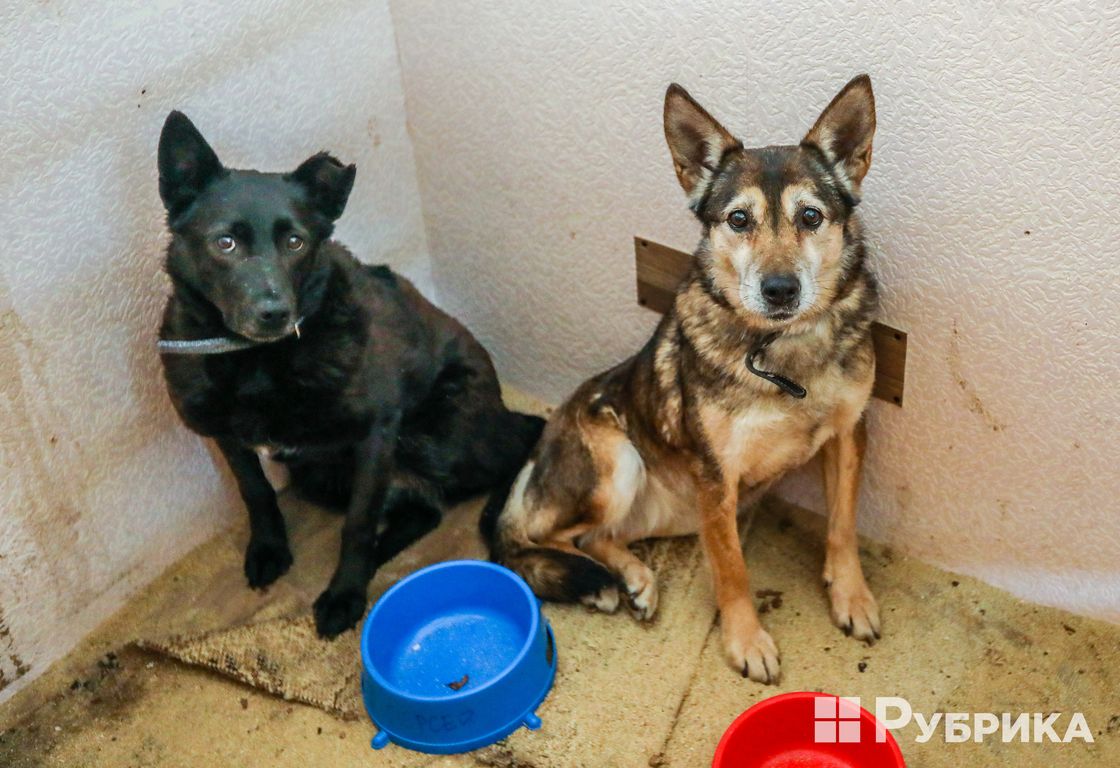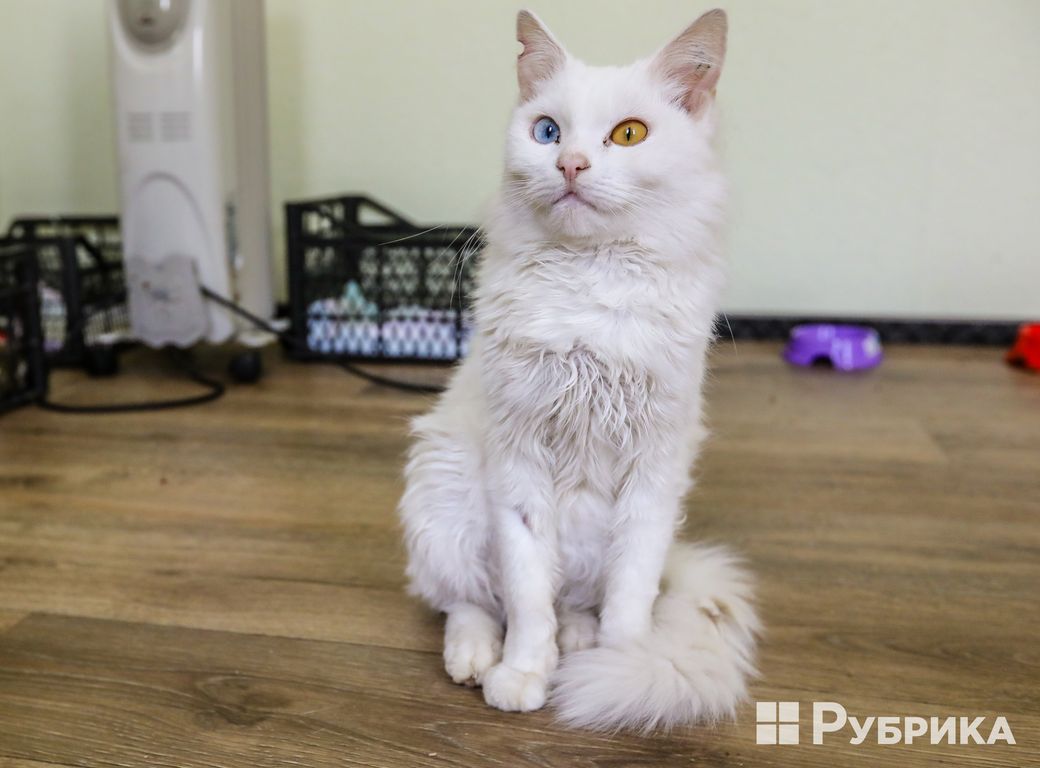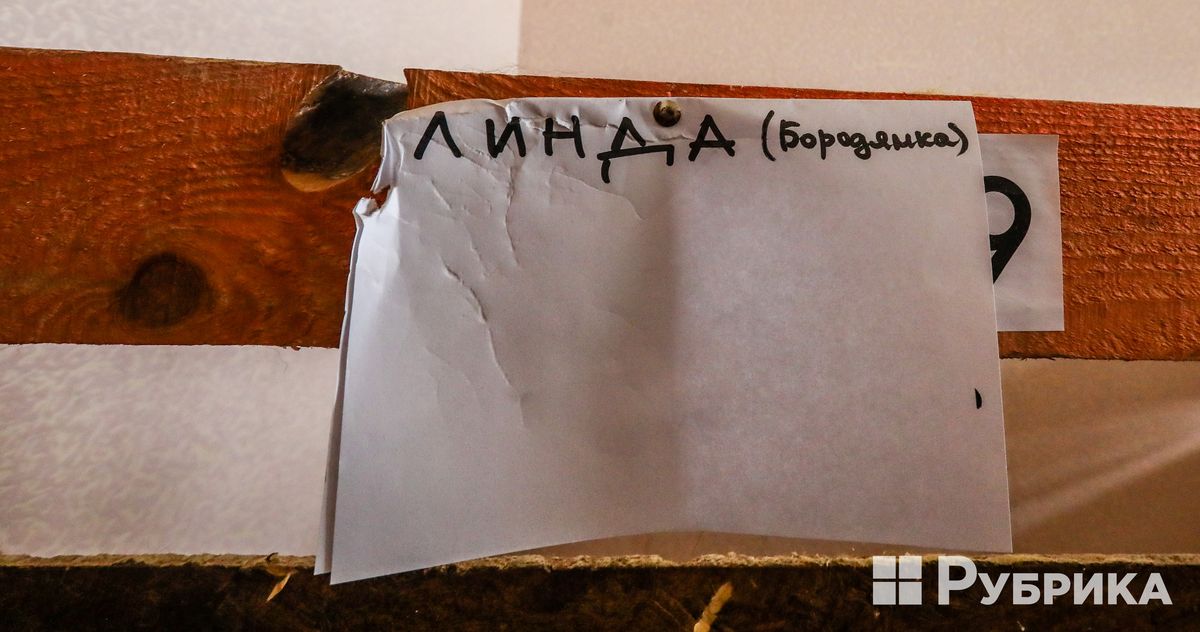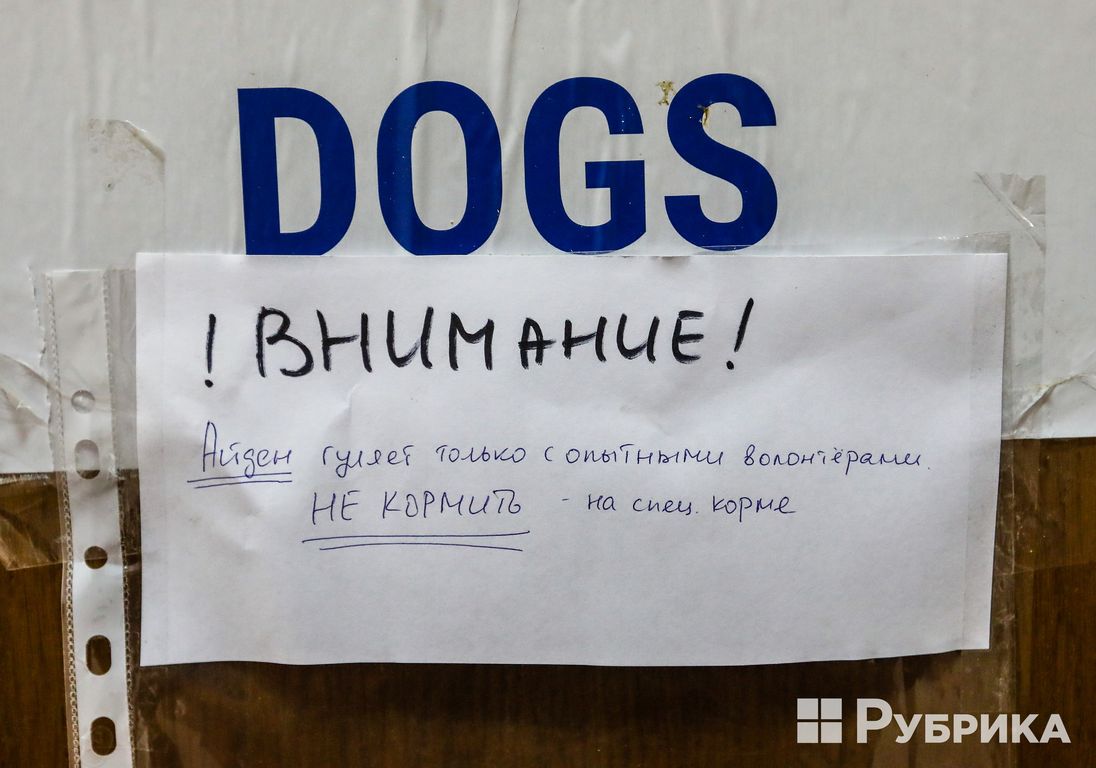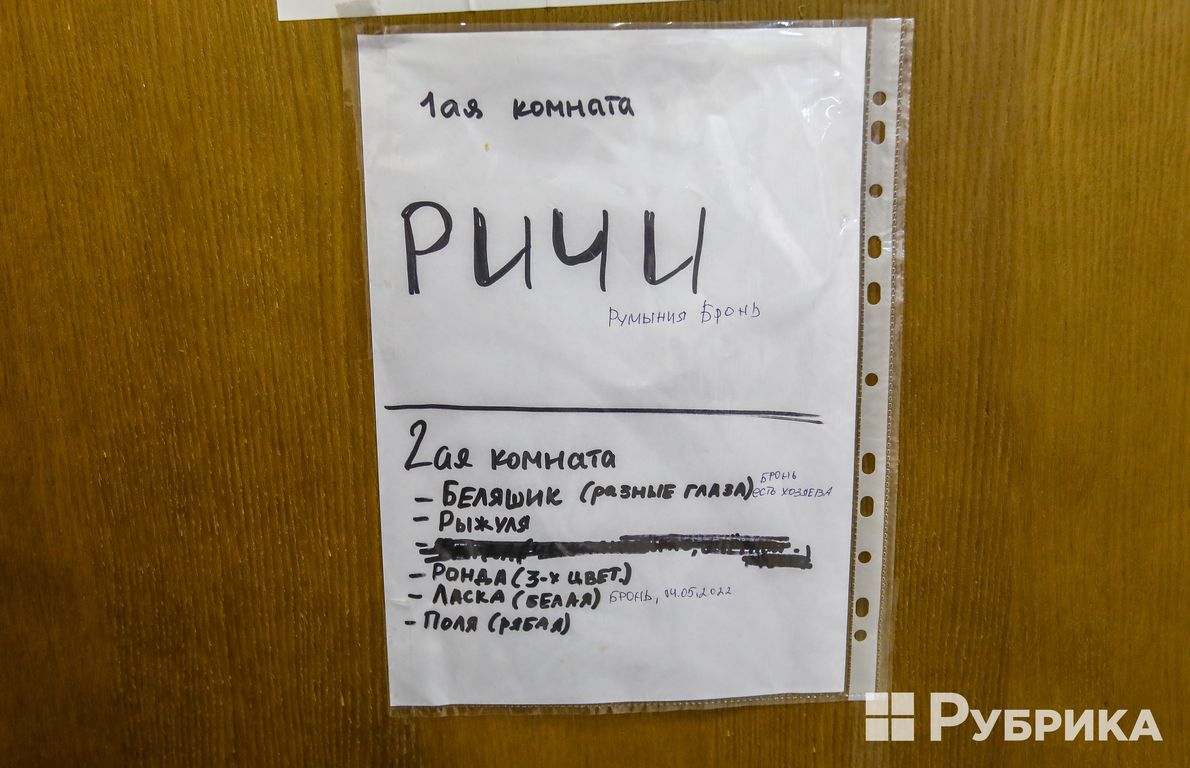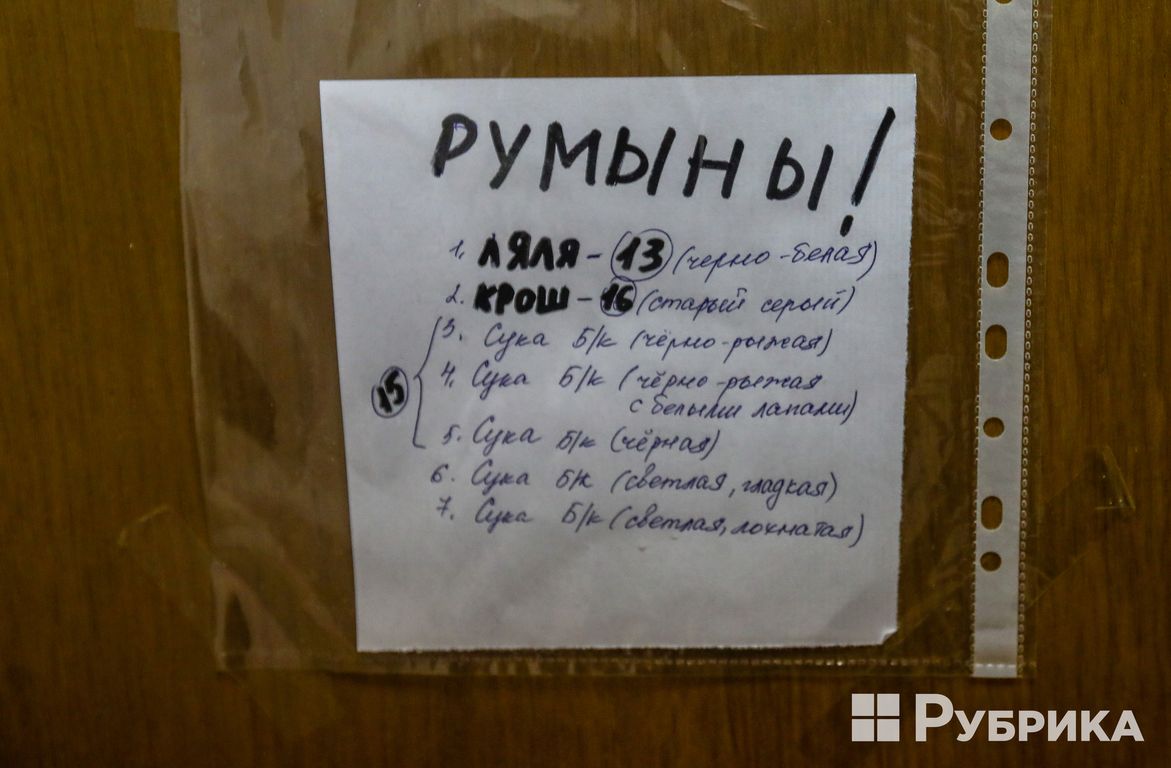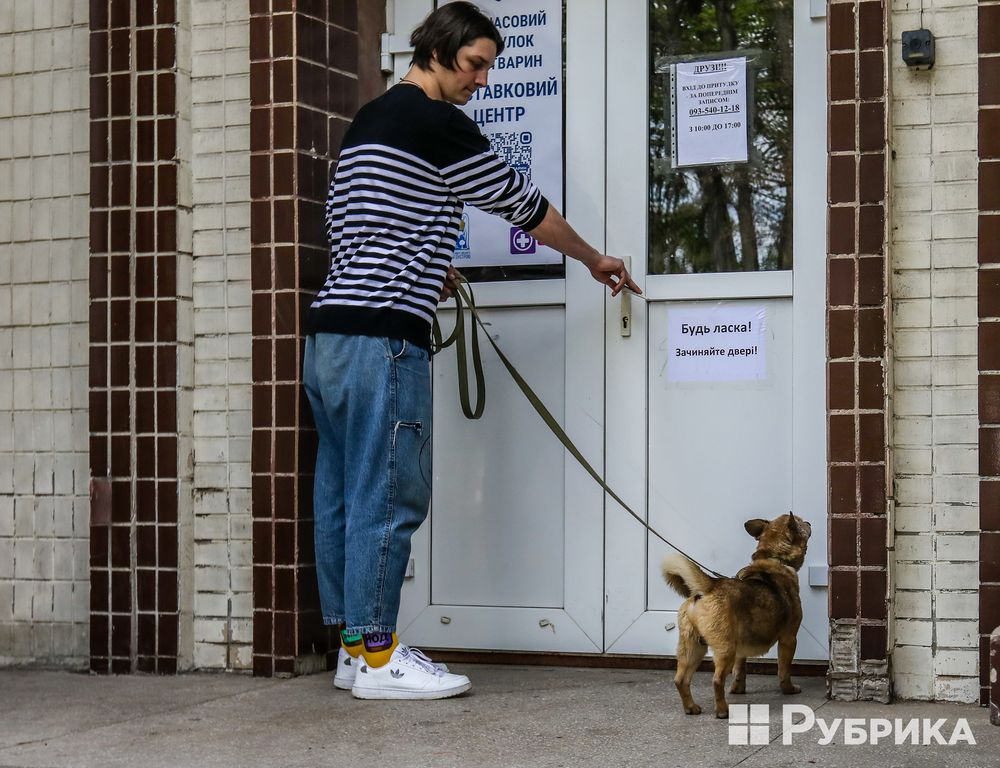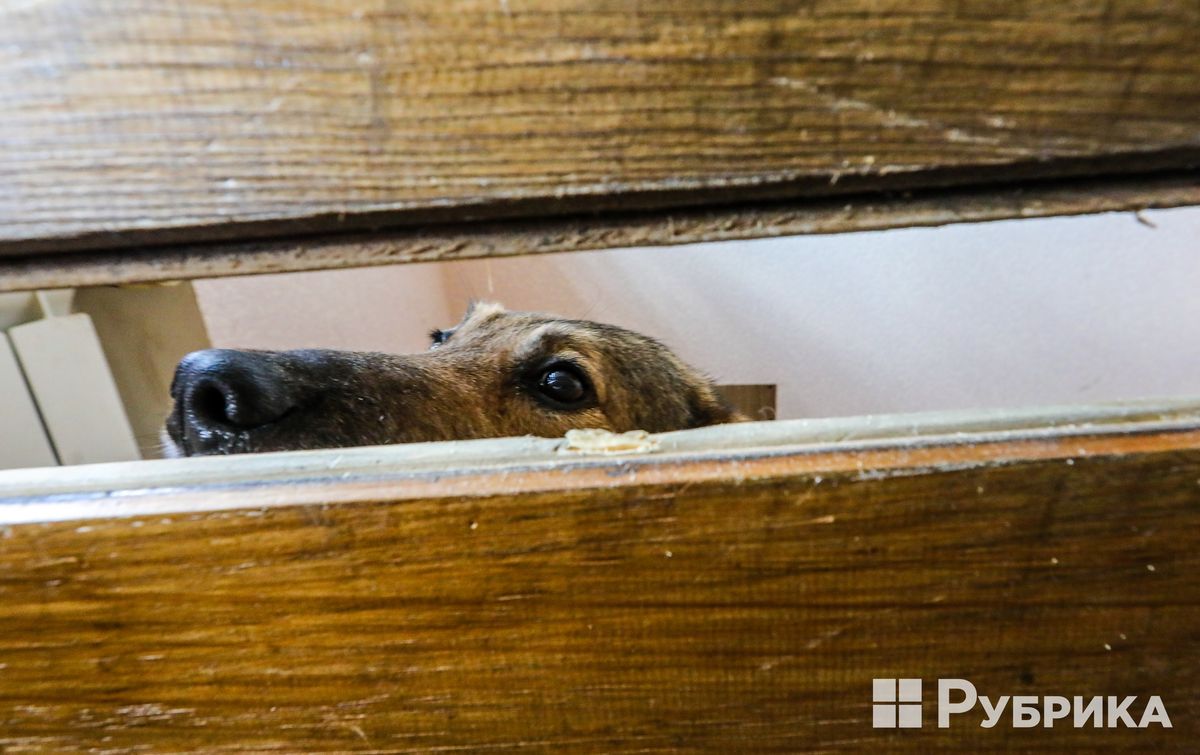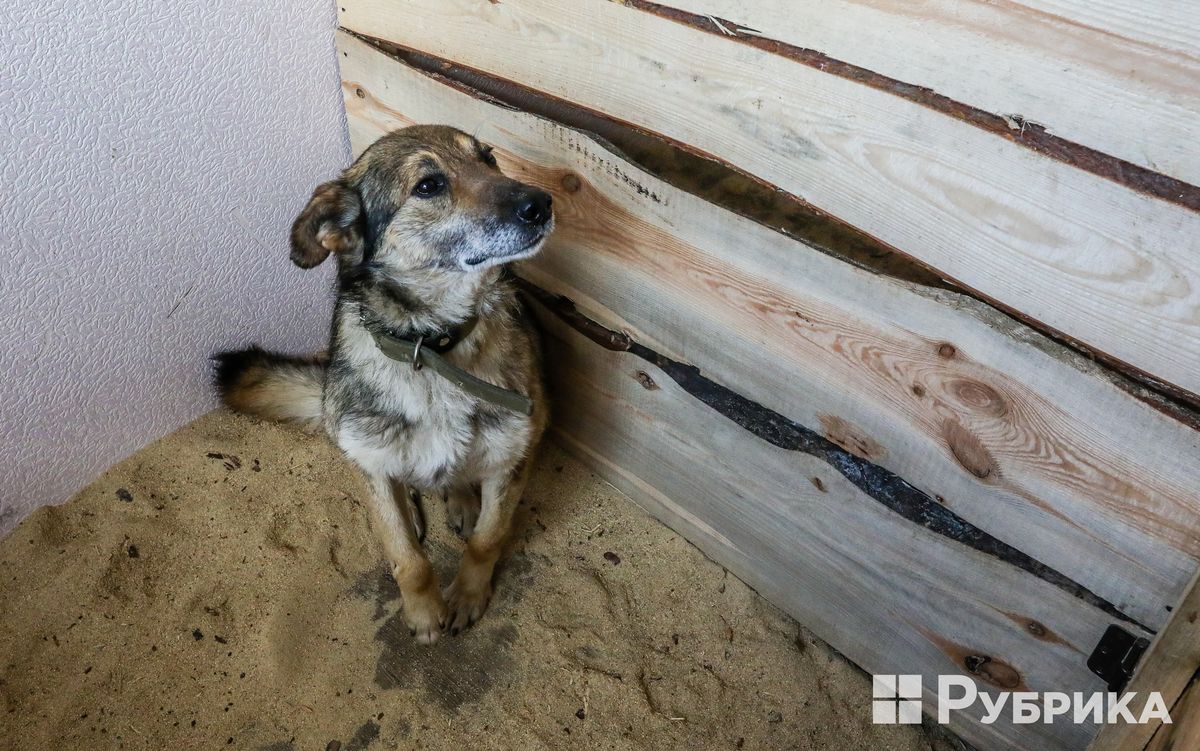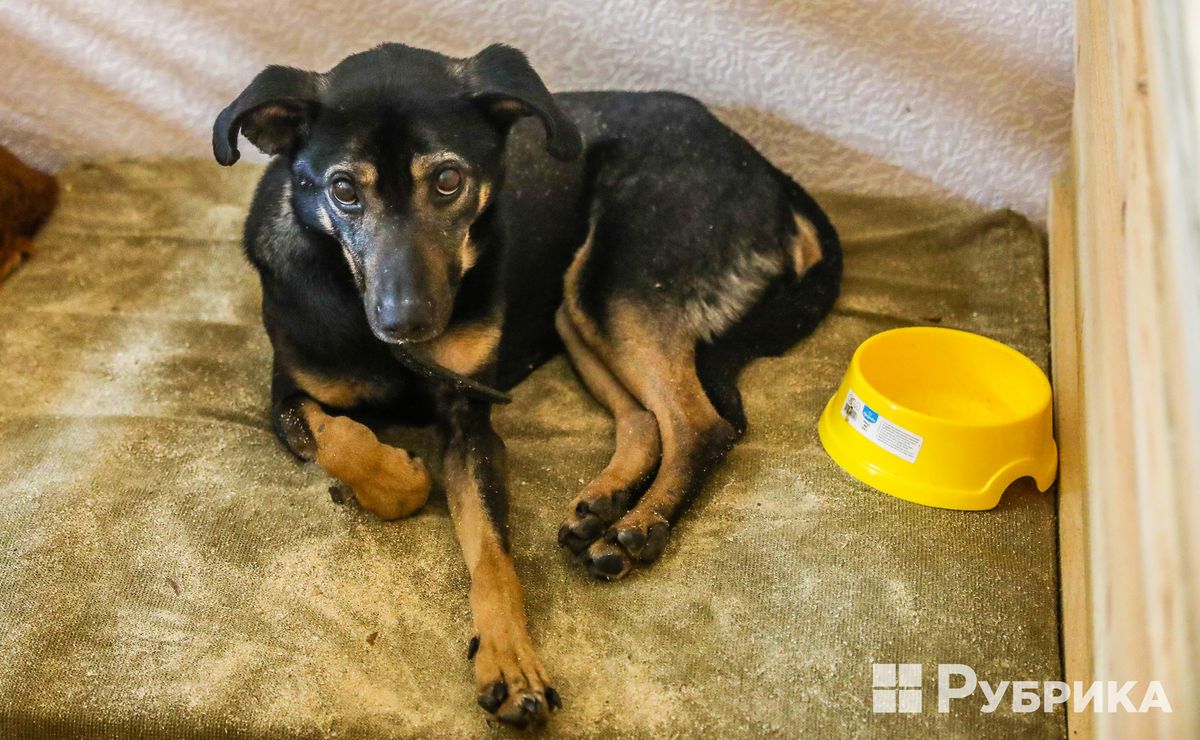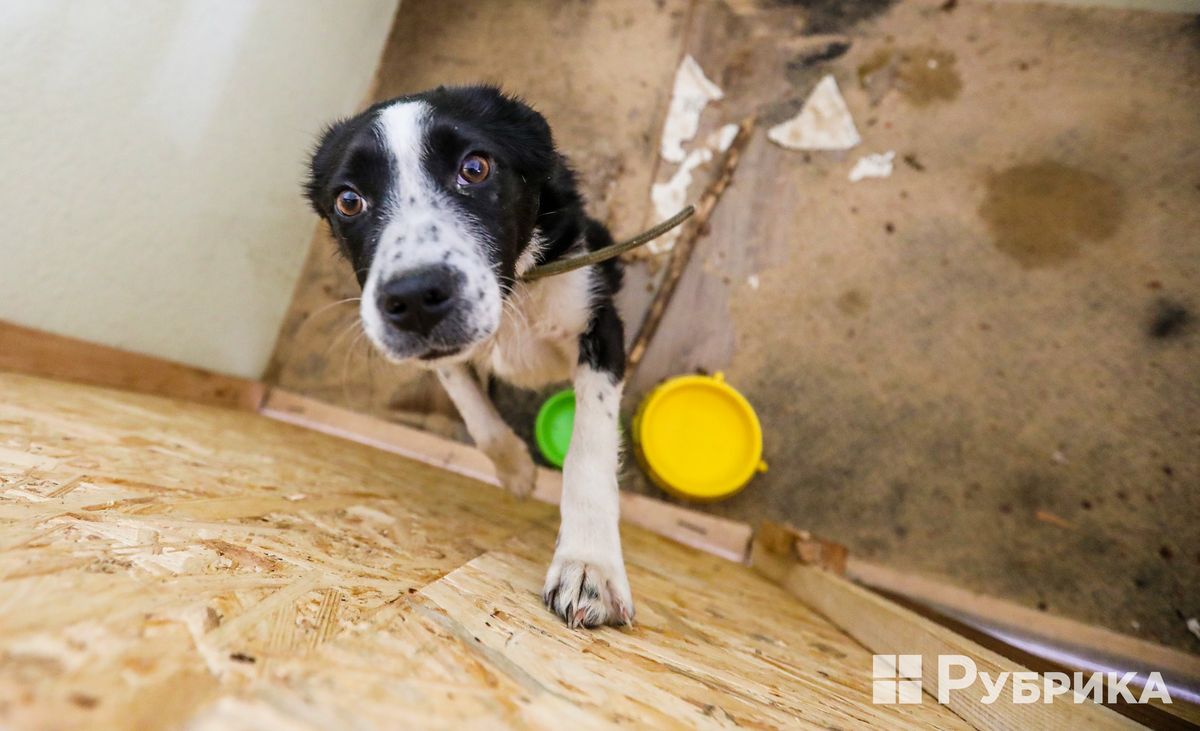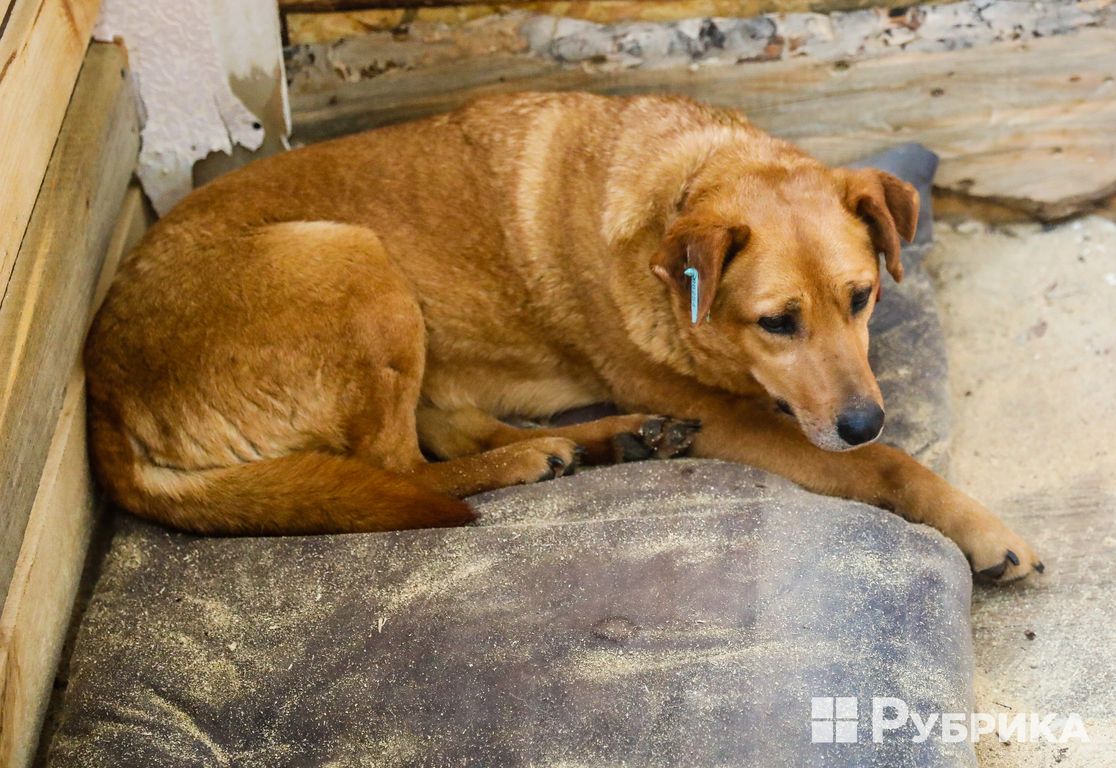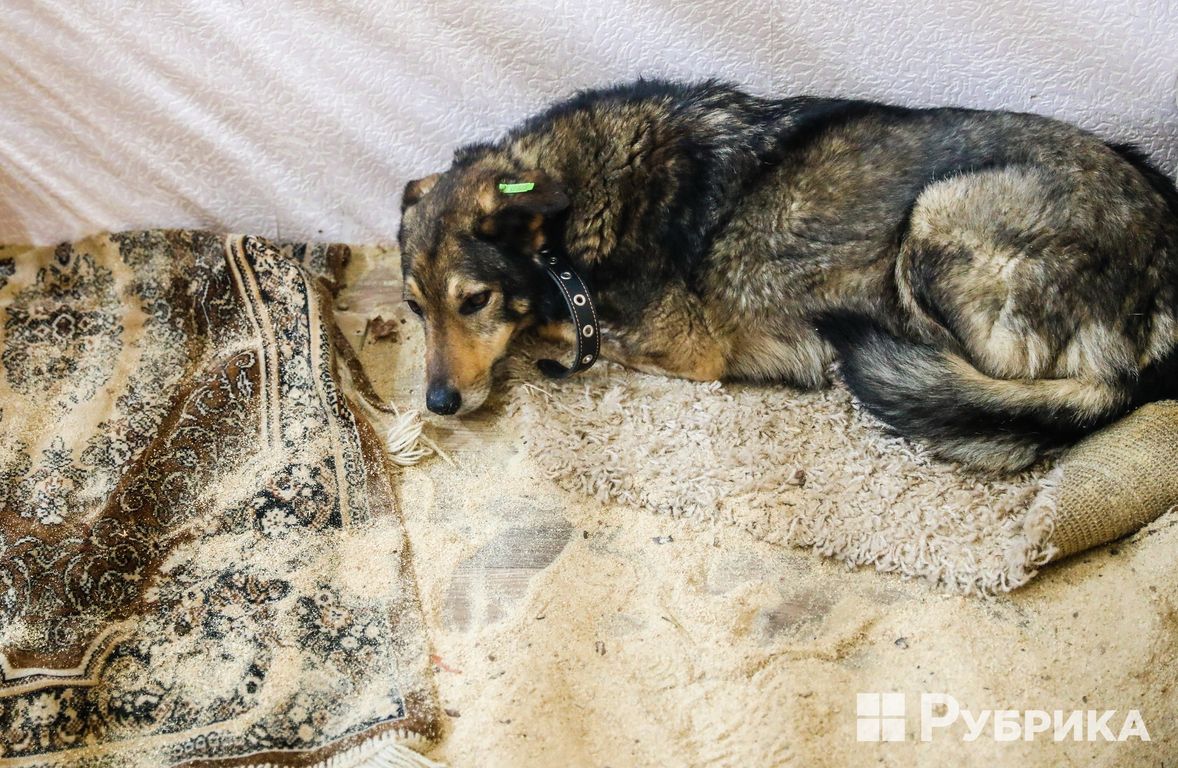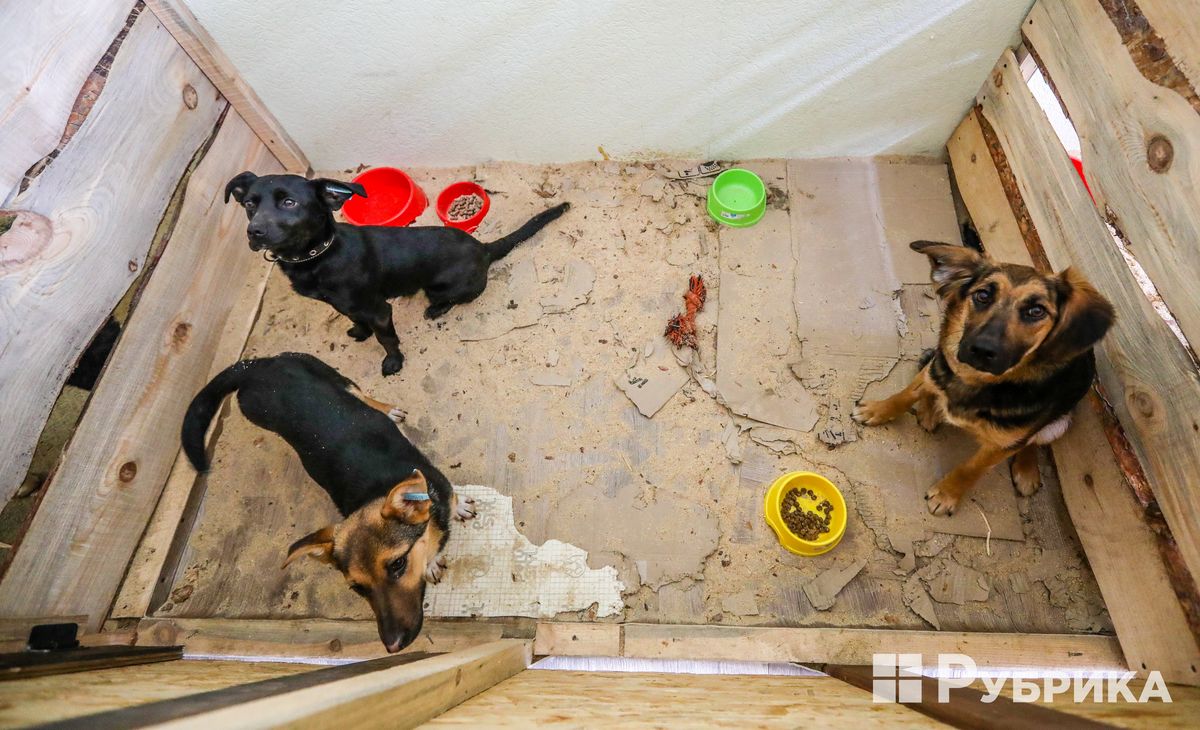
May, life returns to Kyiv VDNG. The bicycle rental shops and several cafés are already working, and a few passers-by are strolling through the grounds and the park. Animals that volunteers brought from the different districts of Kyiv and liberated towns and villages in the region also found shelter here.
The temporary shelter was created here by the joint efforts of city services, volunteers, and the VDNG (the latter provided premises). The first animals appeared there on March 31, when our troops liberated Bucha, Irpin, and other cities in the Kyiv region.
How is life in the shelter?
Inside we meet Yelizaveta, a girl who volunteers at the shelter, and, meanwhile, conducts a small tour for "Rubryka". The shelter is calm and quiet, although dogs tend to communicate quite loudly. However, when we enter the rooms, the dogs immediately begin demanding attention, stand on their hind legs, lean against the walls, and "speak" a little to the guests.
Each of them has its own story. Some experienced a lot of stress from the constant explosions of shells. Some do not — they huddle together and find protection near the walls. However, such are a minority. Thanks to the volunteers who take care of them and walk them, dogs quickly return to a peaceful life.
A family of three enters one of the rooms: Oleh, Lyuda, and their daughter Milana. They were walking one of the dogs – it is how they help the shelter, although at first, they came here to choose a cat. All the cats here are kind and gentle, but one got up immediately and deliberately approached Milana. Although this cat is thin, the new owners promise to feed him and say, "it will be a super cat." The dog that the family was walking also chose them: they say it was the first to jump on them. Animals feel human warmth very well.
I go for a walk with Yelizaveta and one of the volunteers. The dog Krosh is walking with us. He is ten years old, and, despite his respectable age, he is very active. After five minutes of walking, Yelizaveta cannot lock him in his corner. He constantly tries to get out and go for a walk again. Liza calms him down, holding him in her arms, and he licks her nose for it. She finally manages to calm him down. She leaves him alone, but Krosh continues wagging his tail frantically.
Oleh, Lyuda, and little Milana have already taken one of the cats from the shelter to their family, but there are still many rescued cats here. Fluffy and well-groomed, they do not hesitate to get into the visitors' arms. They do not mind even the camera in my hands. Cats need people. Here, next to them, you understand that people definitely need cats too.
"The meeting of the animal and its owner cannot be described in words"
Natalia Mazur, veterinarian and acting Director of the Kyiv City Hospital of Veterinary Medicine, says that the animals from this shelter should find a family as soon as possible:
"We consider this shelter to be temporary. We want the animals to get into families as soon as possible and not stay here permanently. We give priority to families who previously had animals. Many animals got lost, for some reason, when there were explosions. Some got untied, and maybe some ran away somewhere during the war. Common people and volunteers find such animals. We started going to the Kyiv region on April 2 ourselves. Here we have animals eligible for adoption from Kyiv and the region. They are social or have already been pets."
The first resident of the shelter came on March 31, and it was a Moscow watchdog.
"He stayed in the shelter for several days and immediately found a family. We published pictures and ads but unfortunately could not find his previous owners. In total, more than 70 animals have passed through the shelter during this time, and 40 of them have found a family," Nataliya shares and continues:
"When we started going to the region, it was not about providing veterinary care. There was not even medical care even for people during the occupation. We provided feed and veterinary care if we could do it on site. Then a woman approached us, her cat had been ill for a month, and during the last week of the occupation, his condition became worse. The cat was in serious condition — he had chronic kidney failure, so it was impossible to help on the spot, and we took him to the hospital. Unfortunately, he died the next day. When a woman brings a sick animal in a bag, it is a difficult feeling. The shelter also houses animals that lived in our shelter in Borodyanka and were on the streets of Borodyanka. There are animals from Hostomel and Irpin. There is an animal from Zaporizhzhia. Its owner moved and asked if the animal could stay with us in the shelter until she found a place to live. She comes here and walks not only her dog but also helps the animals in the shelter. We plan to send some animals abroad, and we already have agreements with families who are already waiting."
Most of the animals in the shelter are unidentified. It means that they are not registered or chipped. "This is what we talked about in peacetime," sighs Natalia: "Friends, chip and register your animals." In this case, it would have been much easier for us to look for the owner now. During all this time, only one identified animal came to the shelter, and we managed to establish the owner, who was from Irpin. When he came to pick it up, the animal was sick, we helped. This meeting cannot be described in words.
Many animals fled the shelling. Volunteers who evacuated people brought us a dog that jumped into the car. We have a veterinarian here, an adoption specialist. Animals are cared for by volunteers. If the animal needs help, we provide it on the spot. If the animal needs surgery or inpatient treatment, we transport it to hospitals. We established this shelter when the logistics were still very complicated. Then, if the animal required inpatient treatment, it was taken to the hospital, and if it needed outpatient treatment or was healthy, it went to the shelter. Animals are treated for fleas and ticks on the spot and get vaccinated. When we give the animal to a new owner, only then do we identify it."
The shelter used to be in Borodyanka. Now demining is underway there, Natalia says it is impossible to get there yet. But after demining, they plan to resume work. They understand that there will be many lost or abandoned animals, and all of them will need a roof over their heads.
"During the occupation, 120 animals died in the shelter because we could not get there," says Natalia about the shelter in Borodyanka. – I know from social media that volunteers took 27 animals to hospitals. When we counted, 226 animals were alive, and 52 animals found shelter at local citizens' houses or fled somewhere.
Volunteers and Natalia say there are caring people who come to the shelter to walk animals and help. However, she emphasizes that all visits must be coordinated with volunteers.
"Because every animal has a certain diet," explains the veterinarian. – When new people come, they often happen not to know something, start feeding the animals something wrong, or bring bones. It happened. And that is why we ask you to coordinate, so we do not need to provide veterinary care to the animal later."
How to help the shelter?
"Today, we need vaccines for cats, animal feed, flea and tick treatments. There are supposedly enough human resources for now, but I think that if someone wants to come and simply go for a walk with an animal, they are very welcome," says Natalia Mazur. "When I personally walk them, it's not me walking them — it is vice versa. It's like cardio. These are rather positive emotions. And in these difficult times, a person should be able to unwind and receive positive emotions. All animals are quite different: there are partner animals, there are those who want to obey you, and there are those who do not allow anyone to control them. They are as different as we are. Therefore, perhaps a person who will come for a walk may find an animal, a good friend. When a person first meets an animal, it's a very cool thing – you can personally feel these emotions, feel what an animal is, talk to it and maybe still take it home. "
To find out how to help and where to direct help, you can contact the shelter directly:
- Shelter's Facebook page
- Phone number: 093-540-12-18
Animals need people
Each cat or dog in the shelter has its own story. The volunteers know none of them completely. "There are animals whose owners have gone abroad. But some owners are unlikely to return to their animals, and then we try to find new families for these animals. We communicate with such owners. The guys from the Territorial Defense helped take people out during the shelling and took these animals away because they were following them everywhere. It is an ordinary case when the animal is on the way to Kyiv and gets adopted before its arrival. That's the best way to go."
The animals in the shelter have names: Peppi, Michelle, Lyalya, Linda, Bagira, Rudy Kudlaty, Krosh, and others. If the volunteers do not know who owns the animal, they come up with the name themselves. It is easier to communicate with them, take care of them, and calm them down. After all, many of these animals have experienced terrible things in recent months:
"The dogs from Borodyanka are still frightened because of all the explosions they heard. When we started building shelters and housing animals, we heard the explosions for some time. The dogs heard them and started whining, got nervous, and started walking in circles," says Natalia. "But it seems to me that, like you and I, animals get used to such sounds. Of course, we are scared, but we are not reacting as we did at the beginning of the war. When people care for and feed them, they become less frightened. Because when we took animals from the region and from the streets of Kyiv during the explosions, we saw them running and how disoriented they were. They didn't understand what was happening. And this animal, even if it is aggressive, can often be taken by the collar or just caught on the back of its neck and get in the car. And only after some time the animal begins to show some of its characters. But if it was nice in peacetime, through care, feeding, and communication with people, the animal will return to regular life."
We hope that every dog and cat that is now in the shelter will soon be able to return to normal lives – especially with loving owners.



